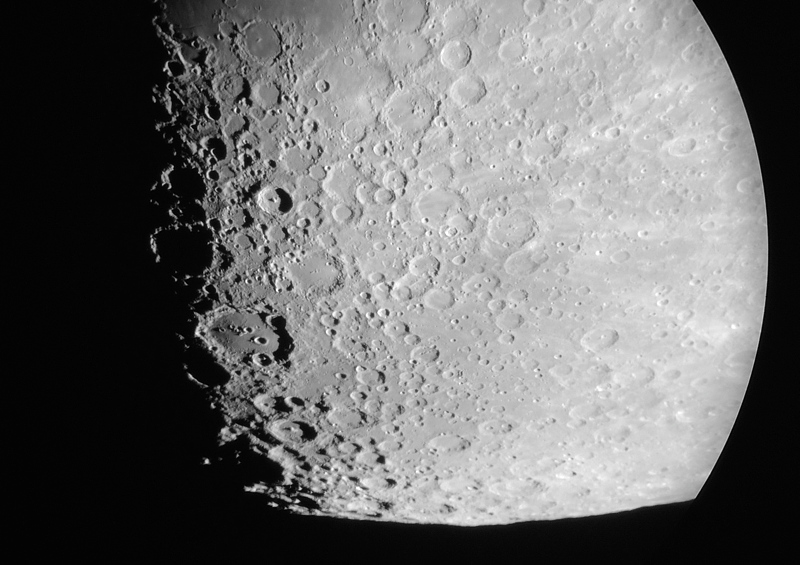iPhone Moon Photography
Posted: 3 October 2014
|
Opened: Thursday, 2 October 2014, 2014 MST Temperature: 72°F |
Session: 724 Conditions: Clear |
2020 MST: quick look at the moon through the 8" LX200-ACF at 83X. Then set up for a viewing attempt of Comet C/2013 A1 Siding Spring. Powered on the GC Wi-Fi Adapter and used SkySafari Pro 4.1 to GOTO the comet, which was very low in the southwest. Tried to see it at 83X and 222X; no joy. I was able to identify stars in the FOV that matched what SkySafari was showing, but all the stars appeared fuzzy due to their very low altitude. The comet was not visible. Gave up at 2037 MST. Due to the low altitude I did not attempt any comet photography.
Slewed back to the moon. Then began doing some software beta testing. Completed that at 2052 MST.
Did lunar observing, 222X. Seeing was not great but still had some good views. The crater Clavius showed some excellent details at times. Set up for iPhone 5s afocal imaging using my modified Magnilux MX-1 Afocal Adapter. I used the Earbuds/Mic volume control as a remote shutter release. This is an afocal 77X image:

Added the 2X PowerMate for this afocal 154X (slightly cropped) image of the southern region of the moon:

I then did some lunar observing at 444X (Explore Scientific 2" 9mm 100° eyepiece + Tele Vue 2" 2X PowerMate). During brief moments of steady seeing the views of the moon were awesome. I did some handheld iPhone afocal 444X imaging. This is the crater Plato (cropped from the full-frame image):

And Clavius (also cropped from the full-frame image):

2125 MST: final look at the moon, 83X.
|
Closed: Thursday, 2 October 2014, 2133 MST Temperature: 67°F |
|
Comments are welcome using Email. If you are on Twitter you can use the button below to tweet this report to your followers. Thanks.
Cassiopeia Observatory Home Page
Copyright ©2014 Michael L. Weasner / mweasner@me.com
URL = http://www.weasner.com/co/Reports/2014/10/03/index.html
